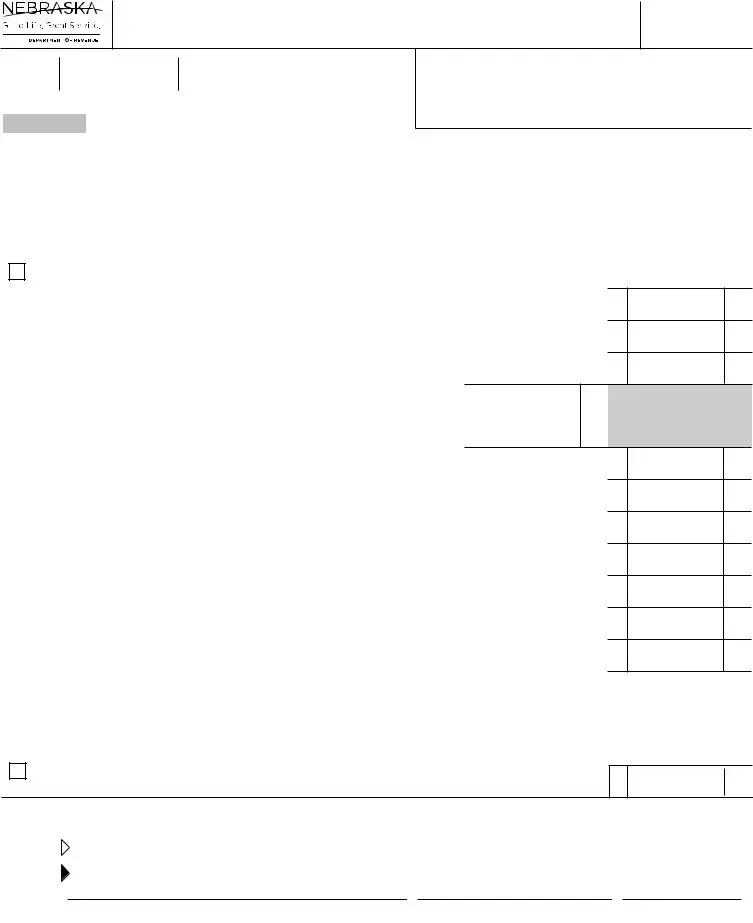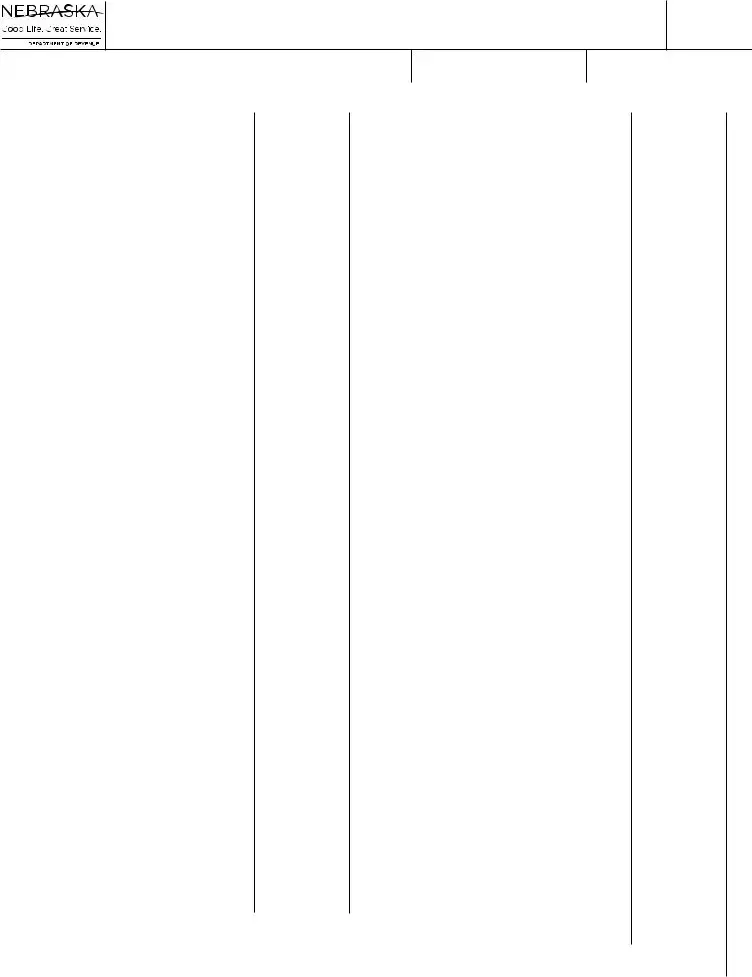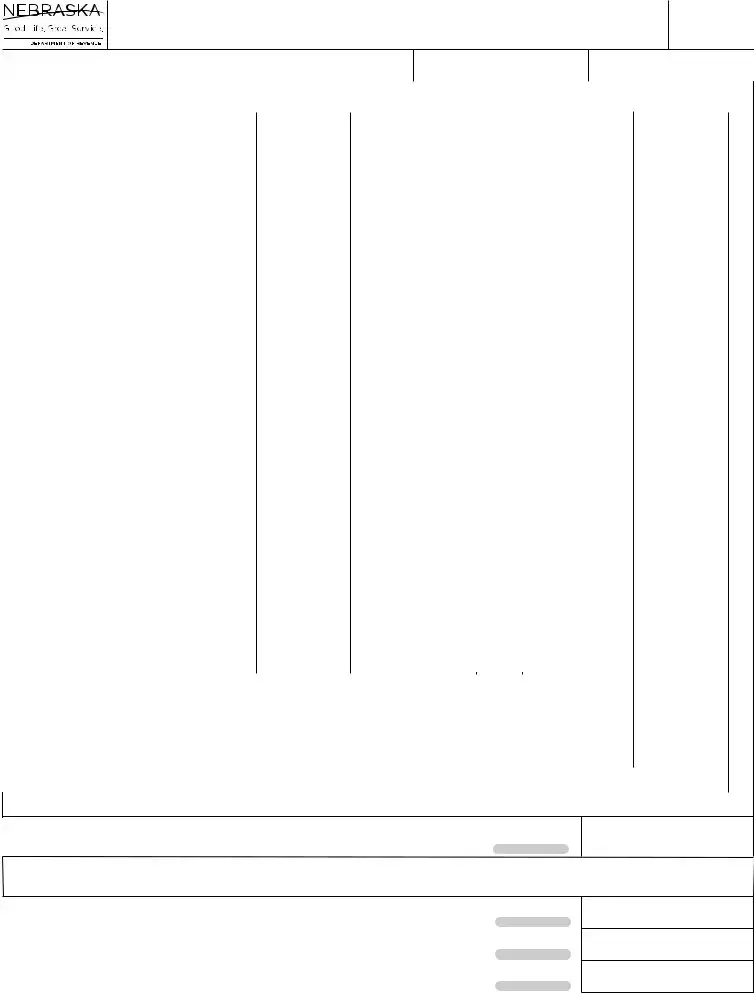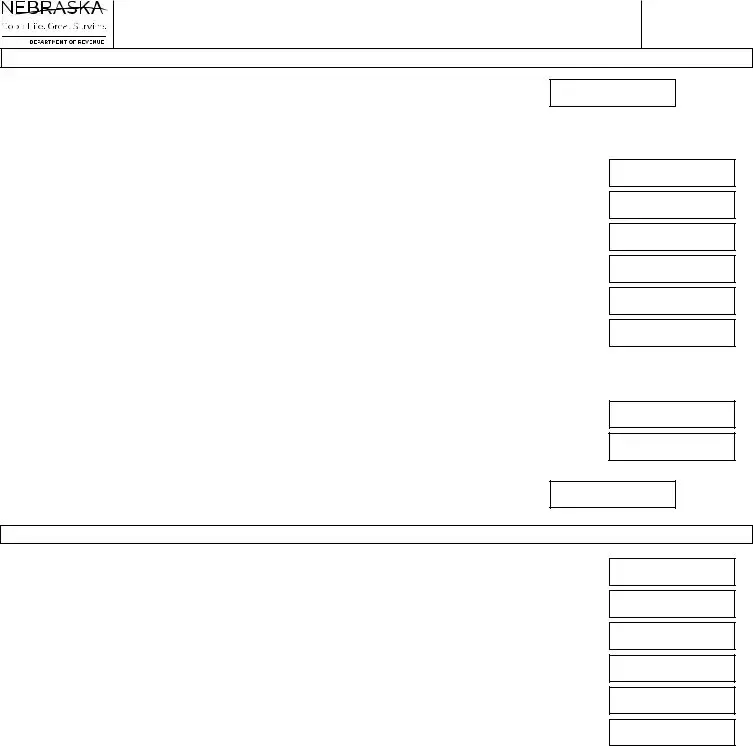Who Must File. Every retailer must file a Form 10. Retailers include remote sellers and Multivendor Marketplace Platforms (MMPs) with more than $100,000 of gross sales or 200 or more transactions in Nebraska. All retailers must hold a Nebraska Sales Tax Permit.
How to Obtain a Permit. You must complete a Nebraska Tax Application, Form 20, to apply for a sales tax permit. After the application has been processed, you will receive your Nebraska sales tax ID number printed on the permit.
When and Where to File. This return and payment are due the 20th of the month following the tax period covered by the return. Paper returns must be mailed to the Nebraska Department of Revenue, PO Box 98923, Lincoln, NE 68509-8923. Retain a copy of this return and all schedules and worksheets for your records.
Electronic Filing (e-filing). All retailers may e-file |
Form 10 |
using NebFile |
for Business. Retailers approved to file a combined |
return |
or required to |
pay electronically, must e-file Form 10. Ifyou have questions about e-filing or payment options, visit the Department of Revenue (DOR) website revenue.nebraska.gov.
Preidentified Return. Retailers will be mailed a preidentified paper return if they did not e-file a Form 10 previously and are not required to pay electronically. This return should only be used by the retailer whose name is printed on it. If you have not received your preidentified return for the tax period, you may print a Form 10 from DOR’s website. Complete the Nebraska ID number, tax period, name, and address information.
Name and Address Changes. If the business name has changed and it is a name change only (for example, if the ownership or federal ID number has not changed), mark through the previous name and plainly print the new name and write “name change only.” If you e-file, name changes should be made on a Nebraska Change Request, Form 22.
If there is a change or correction in the name or address, mark through the incorrect information and plainly print the correct information. If this is the result of a relocation of your business, indicate this by writing “relocated” next to the change made. If you are e-filing, you may make an address change during filing; however, name changes must be done by filing a Form 22. See previous paragraph for name change information. Reminder: A sales tax permit is required for each location. If an additional location is opened, you must apply for another sales tax permit by filing a Form 20.
Ownership Changes. A change in ownership, or type of ownership (individual to a partnership, partnership to a corporation, etc.) requires you to cancel your permit and obtain a new permit for the new business. To cancel the old permit, check the box in the upper left corner of the Form 10. The new owners must complete a Form 20 to obtain their own sales tax permit. The new owners of the business should not use the previous owner’s preidentified sales and use tax return.
Credit Returns. If line 11 is a credit amount, documentation must be sent with the return to support the credit. This documentation must include a letter of explanation, invoices, or credit memos issued to customers. When e-filing, complete the explanation box with information on the credit. You will be contacted if additional documentation is required. If a credit is shown on line 11, it may be applied to a balance shown on line 12, if any, or used on future returns. If the credit cannot be used in a reasonable amount of time, a Claim for Refund of Sales and Use Tax, Form 7, may be filed. The statute of limitations for filing the Form 7 is three years from the due date following the end of the period for which the credit was created.
Amended Returns. An amended Form 10, available on DOR’s website, may only be filed by paper. Mandated retailers must pay all balance dues electronically. If you e-file, you can make changes to your filed return any time on or before the return’s due date. This feature is for current tax period returns only.
Penalty and Interest. If a return is not filed and/or is not paid by the due date, a penalty may be assessed in the amount of 10% of the tax due or $25, whichever is greater. Interest on the unpaid tax will be assessed at the rate printed on line 12 from the due date until payment is received.
Retention of Records. Records to substantiate this return must be kept and be available to DOR for a period of at least three years following the date of filing the return.
Additional information regarding sales and use taxes may be found in the “Information Guides” section of DOR’s website.
Specific Instructions
Retailers must report the tax due for each type of tax. If no sales or use tax is due, the retailer must indicate it by entering a zero, N/A, drawing a line, writing a word, or statement on the appropriate line. Failure to do so extends the statute of limitations to six years for audit purposes.
Complete the Nebraska Net Taxable Sales and Use Tax Worksheets to assist with the Form 10.
Line 1. Enter the total dollar amount of ALL Nebraska sales, leases, rentals, and services made or facilitated by your business or by an MMP on your behalf. Enter both taxable and exempt sales. Line 1 does not include the amount of sales tax collected.
Line 2. Complete the Nebraska Net Taxable Sales and Use Tax Worksheets for allowable exemptions or deductions, including the MMP deduction. Enter the Nebraska net taxable sales rounded to the nearest whole dollar. Retailers making sales through MMPs refer to the MMP Users Only instructions below.
Lines 4 and 5. Transactions Subject to Use Tax. Use tax is due on all taxable purchases when Nebraska and any applicable local sales tax is not paid. Use tax is due on your cost of these items or taxable services. Examples include, but are not limited to:
Purchases of uniforms, magazines, computers, software; or
Purchases of taxable services such as repair or installation labor on tangible personal property, pest control, building cleaning, or motor vehicle towing;
Purchases of property from outside Nebraska, brought to Nebraska for use or storage; and
Items withdrawn from inventory for use or donation. Line 6. Enter the total local sales tax from the Schedule I.
Line 8. The retailer is allowed to retain a fee for collecting the Nebraska and local sales tax.
Line 12. A balance due resulting from a partial payment, mathematical or clerical errors, penalty, or interest relating to prior returns is entered on this line. The amount of interest includes interest on unpaid tax through the due date of this return. If the amount due is paid before the due date, interest will be recomputed and a credit will be on your next return. If you have already paid the amount on this line with a previous remittance, please disregard it.
Acredit is indicated by the word “subtract” and can be subtracted from the amount due on line 11. However, if your records do not support this credit, please contact DOR.
Line 13. All taxpayers are encouraged to make payments electronically. Do not send a paper check if you are mandated to pay electronically. Electronic payments may be made using DOR’s free e-pay program (EFT Debit), by ACH Credit, credit card, or by phone. Refer to DOR’s website for payment options.
Signatures. This return must be signed by the taxpayer, partner, officer, or member. Include a daytime phone number and email address in case DOR needs to contact you about your account.
Email. By entering an email address, the taxpayer acknowledges that DOR may contact the taxpayer by email. The taxpayer accepts any risk to confidentiality associated with this method of communication. DOR will send all confidential information by secure mail or the State of Nebraska’s file share system. If you do not wish to be contacted by email, write “Opt Out” on the line labeled “email address.”
If the taxpayer authorizes another person to sign this return, there must be a
power of attorney on file with DOR. Any person who is |
paid for |
preparing a |
taxpayer’s return must also sign the return as preparer. |
E-filers |
are required |
to identify the person completing the return during the filing process.
Nebraska Schedule I
The Schedule I displays any city or county that has been reported in the last 12 months. Enter the local sales and use tax due for each city and county. Retailers that make sales using an MMP should enter the result of the total city or county sales tax due by the retailer and the MMP less the city or county sales tax remitted by the MMP on the retailer’s behalf. A city or county may be added by writing the information in the blank boxes on Schedule I. You can find listings of the city and county taxing jurisdictions and the sales tax rates on DOR’s website.
Line 1, Local Use Tax. Total the amounts reported in the use tax column and enter the total from Nebraska Schedule I, on line 5, Form 10.
Line 2, Local Sales Tax. Total the amounts reported in the sales tax column and enter the total from Nebraska Schedule I, on line 6, Form 10.
Multivendor Marketplace Platform (MMP) Users Only
Retailers making sales into Nebraska using an MMP must enter the dollar amount of Nebraska sales remitted by MMPs that are collecting Nebraska sales tax on your behalf. Retain documentation from your MMPs that substantiates this amount.
MVL, ATV, UTV, and Motorboat Leases or Rentals
Enter the portion of the state sales tax (reported on Form 10, line 3) that is from all leases or rentals of: (1) automobiles, trucks, trailers, semitrailers, and truck tractors for periods of more than 31 days that are not classified as transportation equipment, see the Nebraska Sales Tax on Leased Motor Vehicles Information Guide; (2) all-terrain and utility-type vehicles; or (3) motorboats and motorized personal watercraft (for example, jet skis or wave runners).





